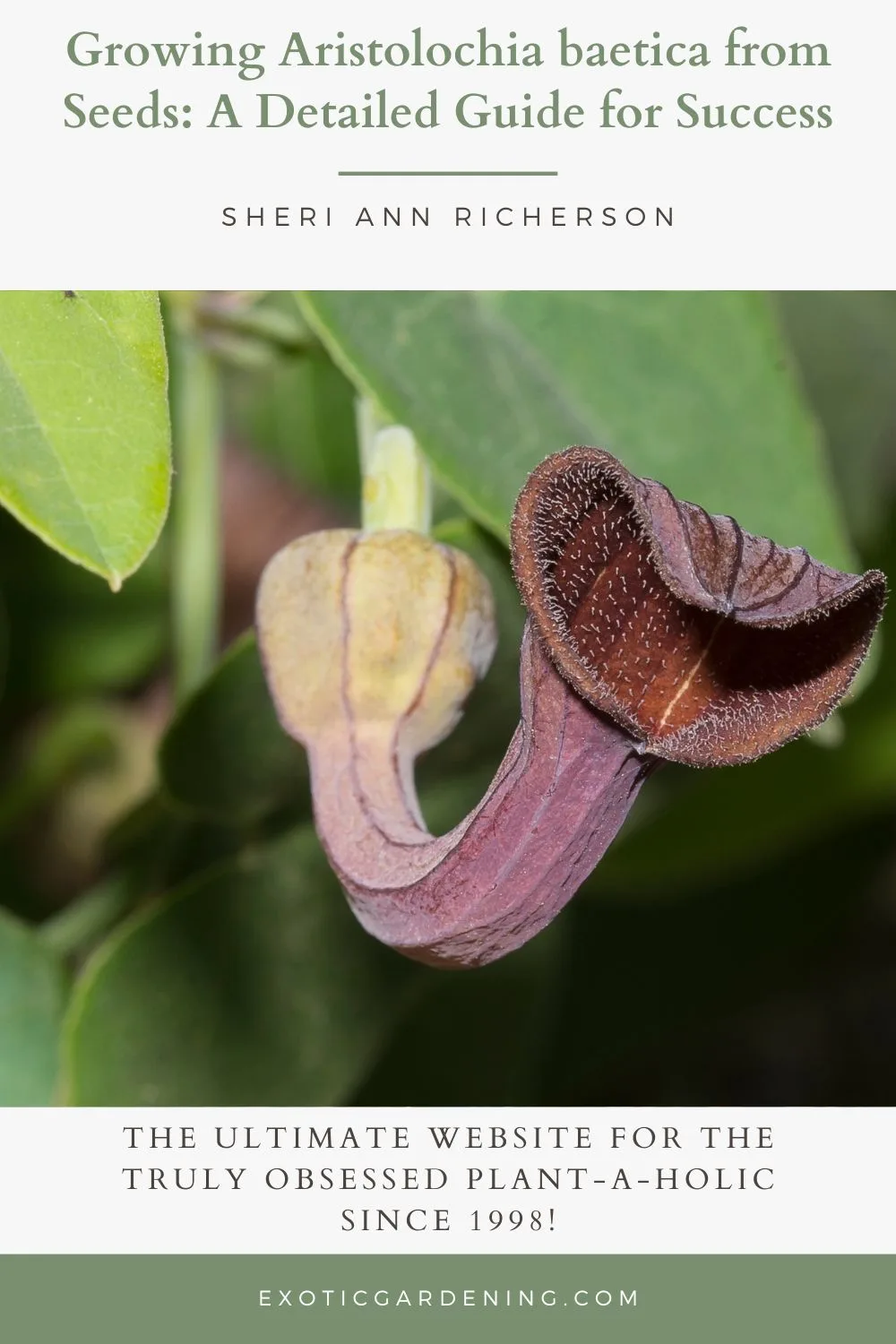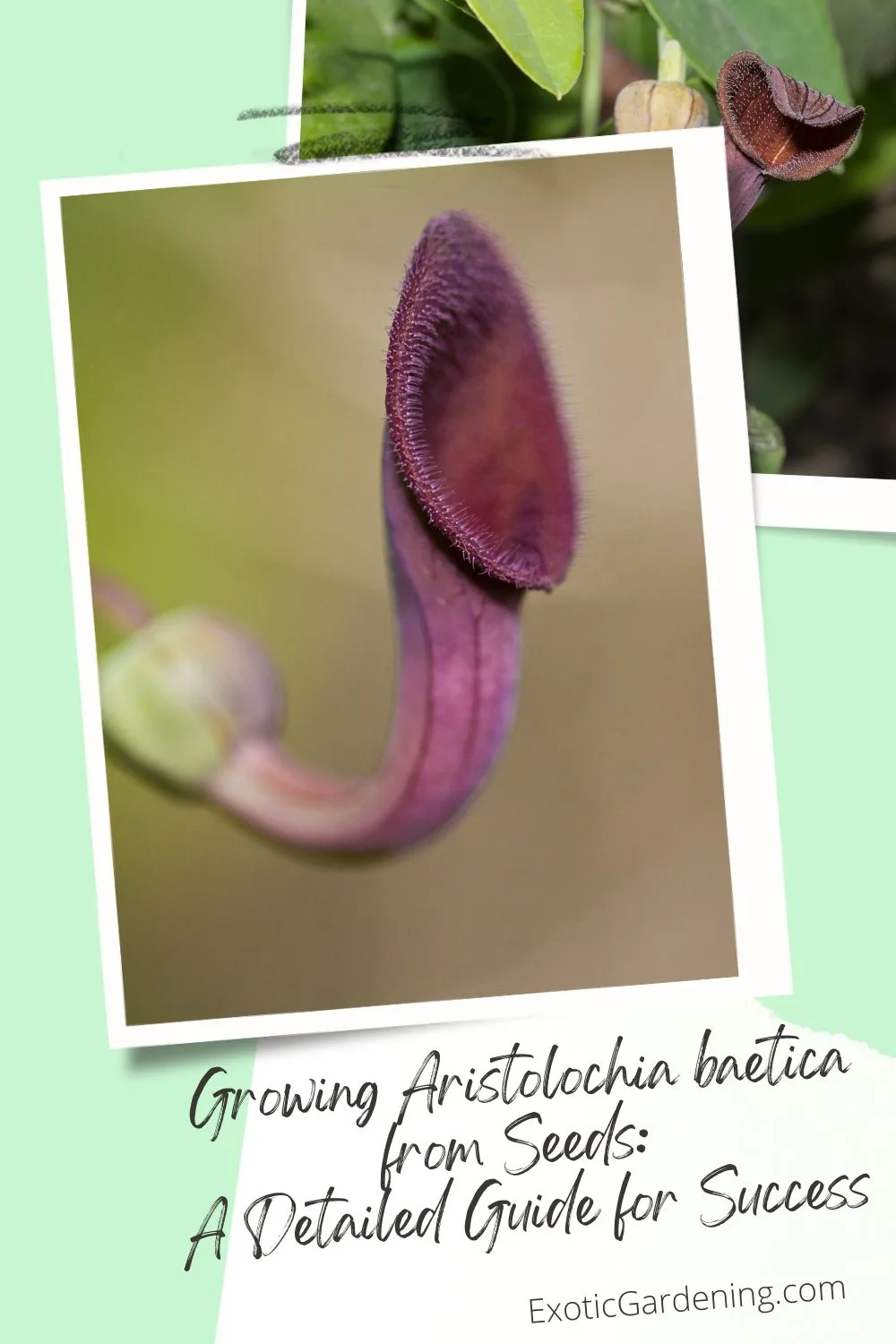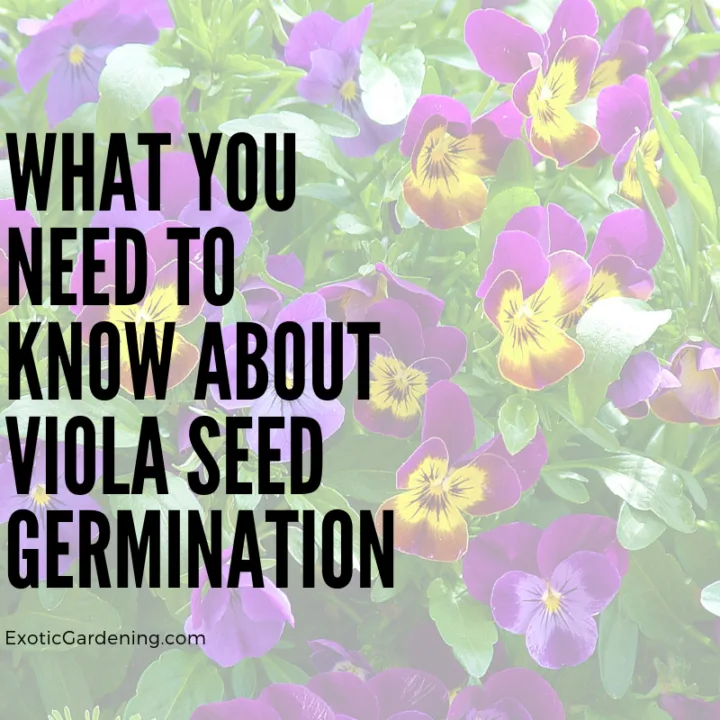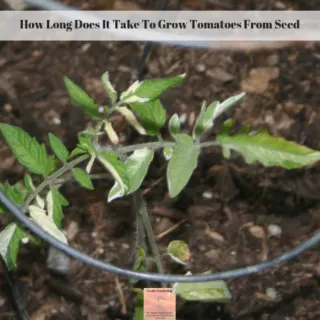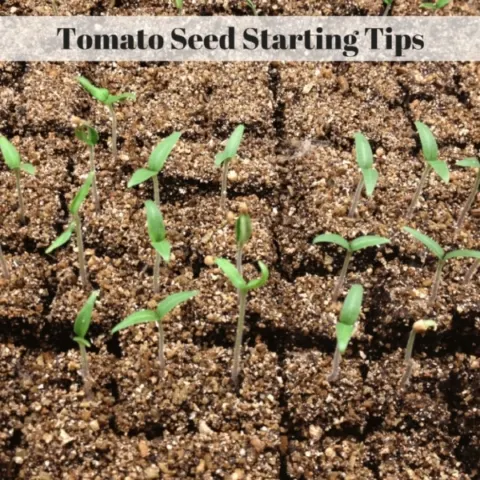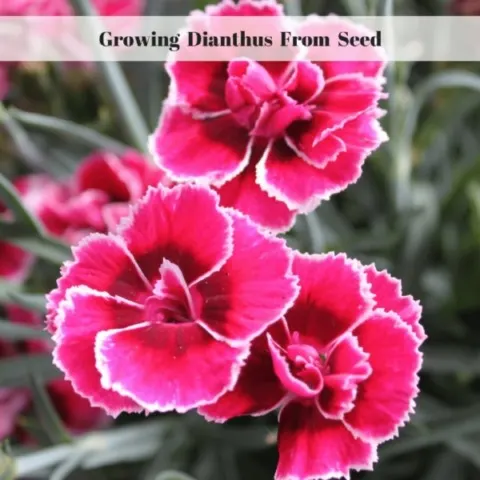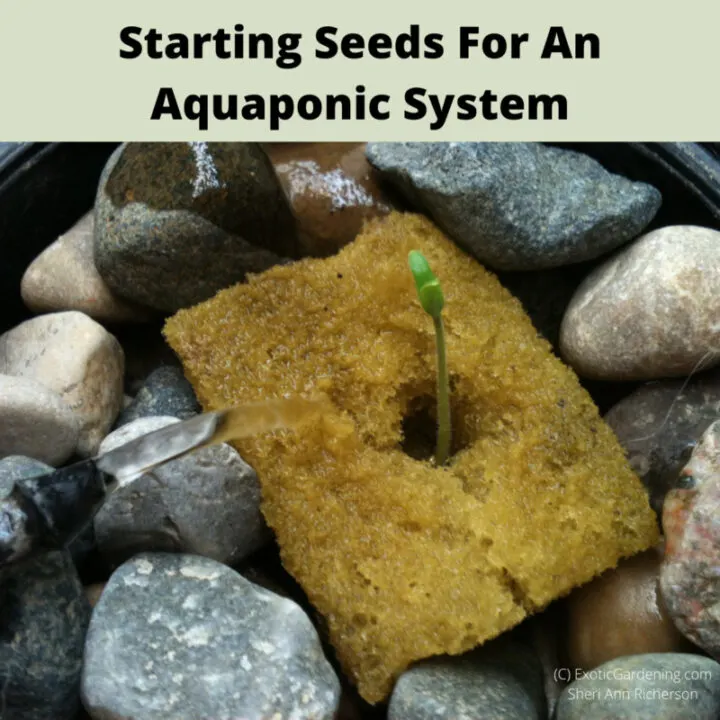Aristolochia baetica, also known as the Andalusian Dutchman’s Pipe, is a stunning perennial climbing plant native to the Mediterranean region.
Renowned for its unique pipe-shaped flowers and lush, heart-shaped foliage, this plant is a favorite among gardeners who value biodiversity, ornamental beauty, or cultivating rare species.
Beyond its striking appearance, Aristolochia baetica plays an essential ecological role, attracting pollinators like flies and moths while serving as a host plant for certain butterfly species.
Growing this plant from seed can be a rewarding challenge, requiring patience, preparation, and careful attention to detail.
Seeds often have a hard coat, making pre-soaking a critical step to encourage germination.
Once established, this vigorous climber thrives in well-drained soils with plenty of sunlight.
Whether you’re adding it to a naturalistic garden or a collector’s display, Aristolochia baetica offers both beauty and ecological benefits, making it a valuable and memorable addition to your garden.
My Experience Growing Aristolochia baetica
On October 24, I began my journey to propagate Aristolochia baetica from seed.
This plant is known for its slow germination, and I was determined to get it right.
Here's how I did it:
1. Preparing the Seeds
Preparation is key when working with Aristolochia seeds, as they have a tough, impermeable seed coat that can slow down germination. To overcome this, I soaked the seeds in water for 24 hours. This soaking process helps soften the seed coat, allowing water to penetrate and stimulate the internal mechanisms required for sprouting.
Pro Tip: Use lukewarm water when soaking seeds. This can mimic natural conditions like rain or dew and increase the success rate of germination.
2. Choosing the Right Planting Medium
After soaking, I selected vermiculite as the growing medium. Vermiculite is a lightweight, sterile material that retains moisture while ensuring good airflow around the seeds. This combination of moisture retention and aeration is critical for preventing issues like rot or fungal growth, which are common in poorly-draining mediums.
I spread a layer of moist vermiculite in a seed tray and carefully laid the seeds on top. I avoided burying the seeds, as many species in the Aristolochia genus benefit from light exposure during germination.
Why Vermiculite?
- It prevents waterlogging.
- It holds consistent moisture.
- It allows roots to establish easily without compaction.
If vermiculite is unavailable, you can substitute with a mix of fine sand and peat moss or a commercial seed-starting mix.
3. Maintaining Ideal Conditions
Aristolochia baetica seeds are slow to germinate, often taking several weeks or even months. The seeds I sowed on October 24 didn’t show signs of life until December 28—a full two months later!
Here’s how I maintained the ideal conditions for germination:
- Moisture: I kept the vermiculite consistently moist but not waterlogged. A fine mist sprayer works well for this.
- Temperature: I placed the seed tray in a warm location with temperatures around 70–80°F (21–27°C). A seed-starting heat mat can help maintain consistent warmth in cooler climates.
- Light: I kept the seed tray in a well-lit area with indirect sunlight. For Aristolochia baetica, light can act as a germination trigger, so avoid covering the seeds with soil.
Pro Tip: Cover the seed tray with a clear plastic dome or plastic wrap to retain humidity, but ensure proper ventilation to prevent mold growth.
4. Observing Germination
After over two months of careful monitoring, the seeds finally germinated on December 28. While the wait was long, the moment I saw those tiny green shoots was incredibly rewarding. The slow germination rate is typical for Aristolochia species, but the results are worth the effort.
Caring for Aristolochia baetica Seedlings
Once the seeds germinated, I carefully transplanted the fragile seedlings into small pots filled with a light, well-draining soil mix.
This step is crucial, as the delicate roots are highly sensitive and can be easily damaged during handling.
Gentle care during this process sets the foundation for healthy growth.
Here are a few essential tips for transitioning your seedlings:
- Use Small Containers: Start with small pots, around 3–4 inches in diameter, to ensure proper moisture control. Using a pot that is too large can lead to overwatering, as excess soil retains more moisture than the plant can use, which increases the risk of root rot.
- Provide Support: As Aristolochia baetica is a climbing plant, it will require support early on. A small stake or trellis in the pot can encourage the vines to grow upward, preventing tangling and promoting a healthier structure.
- Gradual Acclimation: Before moving your seedlings outdoors, it’s important to harden them off by gradually exposing them to outdoor conditions. Over a 7–10 day period, place the pots outside for increasing amounts of time each day, starting with just a couple of hours in a sheltered, partially shaded spot. This process helps the seedlings adapt to wind, temperature fluctuations, and sunlight without causing shock.
With proper care and attention, your Aristolochia baetica seedlings will thrive, eventually developing into vigorous, beautiful climbers that will enhance your garden with their unique flowers and ecological benefits.
Why Grow Aristolochia baetica?
Aristolochia baetica is much more than a visually striking plant; it’s a valuable addition to any garden, offering both ecological and aesthetic benefits.
Whether you're a biodiversity enthusiast or a gardener looking for unique plants, this climbing plant has plenty to offer.
1. Attracts Pollinators
The unusual, tubular flowers of Aristolochia baetica are not just visually captivating—they’re also highly effective at attracting pollinators. The flowers emit a subtle scent that lures flies and moths, making it an excellent choice for biodiversity-focused gardens. By planting Aristolochia baetica, you create a welcoming environment for essential pollinators, contributing to a healthier ecosystem.
2. Host Plant for Butterflies
Aristolochia species are well-known as larval host plants for several butterfly species, including the stunning Pipevine Swallowtail. By growing Aristolochia baetica, you’re supporting butterfly populations by providing a crucial food source for their caterpillars, which in turn helps promote a thriving pollinator population in your garden.
3. Low Maintenance and Resilient
One of the standout features of Aristolochia baetica is its adaptability and resilience. Once established, it thrives in well-drained soil with minimal watering, making it ideal for Mediterranean-style, xeriscape, or drought-tolerant gardens. It’s a low-maintenance plant that requires little fuss, yet it rewards you with vigorous growth, vibrant green foliage, and unique flowers.
4. Enhances Vertical Spaces
As a climbing plant, Aristolochia baetica is perfect for adding height and greenery to your garden. It can quickly cover fences, trellises, or arbors, creating a lush, vertical garden element that provides privacy and shade while beautifying your outdoor space.
5. Rare and Eye-Catching
Aristolochia baetica isn’t commonly found in gardens, making it a prized plant for those who love unique and exotic specimens. Its pipe-shaped flowers are conversation starters and give your garden an element of intrigue that few other plants can match.
By growing Aristolochia baetica, you’re not only adding a stunning ornamental plant to your garden but also playing a role in supporting local ecosystems and pollinator populations.
Whether you’re drawn to its ecological benefits, low maintenance needs, or its rare beauty, this plant is a rewarding addition to any gardener’s collection.
Key Takeaways for Growing Aristolochia baetica
- Soaking Seeds is Essential: Soak seeds for at least 24 hours to improve water absorption and germination success.
- Use a Well-Draining Medium: Vermiculite or a similar medium promotes healthy root development and prevents seed rot.
- Be Patient: Germination can take anywhere from 8 to 12 weeks, so don’t give up if you don’t see immediate results.
- Provide the Right Environment: Warmth, light, and consistent moisture are critical for germination.
Why Growing Aristolochia baetica is Worth the Wait
Growing Aristolochia baetica from seed is a slow but immensely satisfying process.
The unique flowers, ecological benefits, and rarity of the plant make it a worthwhile challenge for gardeners.
With patience, consistent care, and the right growing conditions, you can transform tiny seeds into a lush, climbing beauty that will captivate both you and your garden visitors.
Whether you’re drawn to its striking pipe-shaped flowers, its value as a pollinator magnet, or its role in supporting butterfly populations, Aristolochia baetica is a plant that rewards your efforts in countless ways.
Don’t let its slow start deter you—once established, this resilient plant becomes a standout feature in any garden.
Aristolochia baetica thrives in USDA Hardiness Zones 8–10, making it a perfect choice for adding vertical interest to fences, trellises, or arbors in warm, frost-free climates.
If you live outside these zones, you can still grow it in containers and overwinter it indoors.
FAQs: Growing and Caring for Aristolochia baetica
Q. How long does it take for Aristolochia baetica seeds to germinate?
A. Germination typically takes between 2 to 3 months, depending on the growing conditions. Factors like consistent moisture, warmth, and light exposure can influence germination time. In my experience, the seeds sprouted just over two months after planting.
Q. Can Aristolochia baetica grow in colder climates?
A. While Aristolochia baetica thrives in warm Mediterranean climates, it can be grown in colder regions if proper care is taken. Overwintering the plant indoors or in a greenhouse is essential in areas with freezing temperatures. Using containers makes it easier to move the plant indoors during the winter.
Q. What type of soil does Aristolochia baetica prefer?
A. Aristolochia baetica thrives in well-draining soil that is slightly acidic to neutral (pH 6.0–7.5). Enriching the soil with organic matter, such as compost or leaf mold, can improve drainage and provide essential nutrients for healthy growth.
Q. Does Aristolochia baetica require a lot of water?
A. Once established, Aristolochia baetica is quite drought-tolerant and requires minimal watering. During the germination and seedling stages, however, consistent moisture is crucial. Ensure the soil remains damp but not waterlogged to avoid root rot.
Q. How large does Aristolochia baetica grow?
A. This climbing plant can reach heights of up to 10–15 feet (3–5 meters), making it ideal for covering fences, arbors, and trellises. Providing support early on encourages healthy climbing growth and prevents the plant from sprawling.
Q. Does Aristolochia baetica need full sun?
A. Aristolochia baetica grows best in full sun to partial shade. In hotter climates, some afternoon shade can prevent stress during peak summer temperatures.
Q. How often should I fertilize Aristolochia baetica?
A. This plant benefits from light fertilization during the growing season. A balanced, slow-release fertilizer or a diluted liquid fertilizer applied once a month is usually sufficient. Avoid over-fertilizing, as this can lead to excessive foliage growth at the expense of flowers.
Q. Can Aristolochia baetica be grown in containers?
A. Yes, Aristolochia baetica can thrive in containers as long as the pot is large enough to accommodate its root system and has good drainage. Growing it in a container is a great option for areas with cold winters, as the plant can be moved indoors.
Q. Is Aristolochia baetica prone to pests or diseases?
A. While generally hardy, Aristolochia baetica may occasionally attract aphids or spider mites. Regularly inspecting the plant and using insecticidal soap or neem oil can help manage these pests. Overwatering can lead to fungal diseases, so ensure the soil is well-drained.
Q. How do I propagate Aristolochia baetica?
A. Aside from growing it from seed, Aristolochia baetica can also be propagated through semi-hardwood cuttings. Take cuttings in late spring or early summer, dip them in rooting hormone, and plant them in a moist, well-draining medium until they develop roots.
Q. Are Aristolochia baetica flowers fragrant?
A. While the flowers of Aristolochia baetica are not traditionally fragrant in the sense of a pleasant smell, they do emit a scent that attracts pollinators such as flies and moths, which is a key part of their ecological role.
Q. Is Aristolochia baetica toxic?
A. Yes, like many Aristolochia species, Aristolochia baetica contains aristolochic acids, which can be toxic if ingested. It’s important to keep the plant out of reach of pets and children and to avoid using it in herbal remedies.
Q. Can Aristolochia baetica be used as a ground cover?
A. While Aristolochia baetica is primarily a climbing vine, it can spread along the ground if not provided with a support structure. However, it’s best used as a climber for optimal growth and display of its unique flowers.
Q. When does Aristolochia baetica bloom?
A. Aristolochia baetica typically blooms in late spring to early summer. In warm climates, it may produce flowers sporadically throughout the growing season.
Q. How do I prune Aristolochia baetica?
A. Pruning is usually not necessary for Aristolochia baetica unless you want to control its size or shape. If needed, prune in late winter or early spring before new growth begins. Remove any dead or damaged stems to encourage healthy growth.
This comprehensive FAQ should cover most of your questions, but feel free to reach out if you’re curious about anything else related to growing or caring for Aristolochia baetica!
Seed Starting
Kickstart your gardening journey with our curated Seed Starting Resources! This handy list is packed with everything you need to grow healthy plants from seed, whether you're a beginner or an experienced gardener. Discover essential tools, step-by-step instructions, and expert tips for selecting the best seeds, preparing your soil, and creating the ideal conditions for germination. From seed trays and grow lights to organic fertilizers and watering techniques, this resource has it all. Perfect for planning your next gardening adventure and ensuring success every step of the way!
How To Plant Brugmansia Seeds
Learn how to plant Brugmansia seeds as well as why you might want to start these fragrant night blooming plants from seed.
Arisaema Seed Germination: Faster blooms from seed grown plants
Arisaema seed germination is easy as long as you have fresh seeds. You can even trick seed grown plants into blooming faster.
Product Review: Burpee Eco-Friendly All-In-One 25-Plant Greenhouse Kit
I gave the Burpee Eco-Friendly All-In-One 25-Plant Greenhouse Kit a try. Learn how to use it and what I thought of it.
Seed Starting: Snapdragon
When it comes to seed starting, snapdragon are pretty easy. You can direct sow snapdragons. Learn about growing snapdragons from seed.



